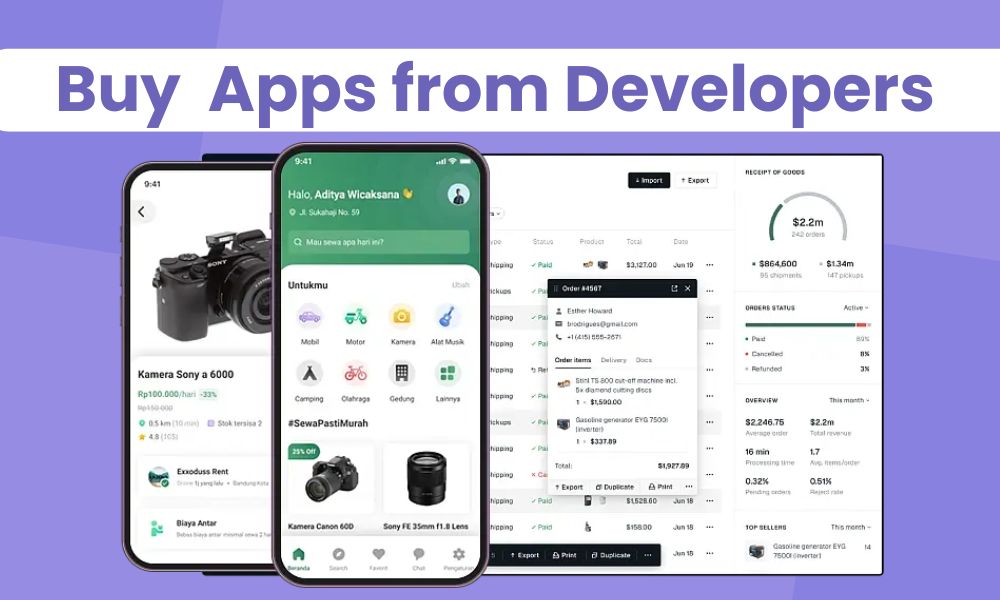In recent years, bike-sharing and e-scooter services have revolutionized how people move around cities. The growing demand for eco-friendly, on-demand transportation options has made apps like Limebike incredibly popular. If you're an entrepreneur or a business looking to enter the booming e-scooter sharing app market, developing a Limebike clone could be your best path forward.
But, as any developer knows, creating a scalable, reliable app isn't a walk in the park. From architecture to tech stacks, ensuring your Limebike-like app can handle large-scale usage is no easy feat. In this post, we’ll explore the essential development tools and technologies that can help you build a Limebike clone that not only works seamlessly but also scales effectively as demand grows. Whether you’re an on-demand app development company or a solo developer, this guide will provide a solid foundation for your project.
Understanding the Limebike Clone Concept
Before diving into the e-scooter sharing app development process, it's important to understand what a Limebike clone really entails. A Limebike-like app mimics the core functionality of Lime's bike-sharing service but can be tailored to suit your specific market.
Generally, a Limebike clone allows users to locate, rent, and ride electric bikes or scooters using a mobile application. These apps are designed to offer users an on-demand, pay-as-you-go experience, making them ideal for urban areas. Key features typically include:
- Real-time vehicle tracking
- User account management
- GPS navigation and geolocation
- Payment gateway integration
- Ride history and analytics
- Admin dashboard for fleet management
For developers and businesses looking to build their own app, understanding these core functionalities is the first step in the development process. Once you have that clear, it’s time to choose the right tools and technologies to make your Limebike clone a success.
Essential Tools and Technologies for Building a Scalable Limebike Clone
Creating a scalable Limebike clone isn’t just about writing code. It’s about using the right combination of technologies to ensure that the app functions well under increasing demand, maintains smooth user experiences, and integrates seamlessly with hardware like e-scooters or bikes.
Let’s break down some of the key tools and technologies that can make or break your app.
1. Mobile App Development Frameworks
The mobile app is the heart of any e-scooter sharing app. Whether you’re developing for iOS or Android, you need frameworks that allow for efficient, high-quality app development.
- React Native: If you're aiming to develop a Limebike-like app for both iOS and Android simultaneously, React Native is an excellent choice. With this cross-platform framework, you can write once and deploy on both platforms, which reduces development time and costs. React Native also provides excellent performance, essential for apps that need to run smoothly when users are actively tracking their rides or interacting with maps.
- Flutter: Another strong contender for cross-platform development is Flutter. This Google-backed framework allows you to create high-performance apps with a beautiful, native look and feel. If user interface and experience are a major focus of your Limebike clone, Flutter can help you deliver a sleek app.
- Swift (for iOS) and Kotlin (for Android): If you prefer developing native apps, Swift (for iOS) and Kotlin (for Android) are the go-to programming languages. While native apps may take more time and resources to build, they often perform better and allow for tighter integration with the device’s capabilities.
2. Backend Technologies
A Limebike clone needs a solid backend to handle user data, ride information, payments, and more. For a scalable app, your backend should be flexible, easy to maintain, and capable of handling increasing traffic as the user base grows.
- Node.js: With its event-driven architecture, Node.js is perfect for building scalable backend systems. It can handle thousands of concurrent connections, which is especially useful for a real-time e-scooter sharing app. Moreover, Node.js has an extensive ecosystem, making it easy to integrate with third-party services like GPS or payment gateways.
- Ruby on Rails: For rapid development and high scalability, Ruby on Rails is another good option. It’s designed for developers who want to get apps up and running quickly without compromising on functionality. With its vast collection of libraries and pre-built tools, Ruby on Rails can significantly speed up the development of your Limebike-like app.
- Django (Python): If you prefer working with Python, Django is a powerful, secure, and scalable option for backend development. It provides a framework that ensures both simplicity and scalability. As an added bonus, it integrates well with machine learning tools if you want to incorporate predictive analytics in your e-scooter sharing app.
3. Real-time Data Processing Tools
One of the main challenges in building a Limebike clone is providing users with real-time updates on scooter or bike availability, location, and status. For this, you’ll need tools that can handle real-time data processing.
- Socket.io: This JavaScript library is perfect for enabling real-time, bidirectional communication between the server and the mobile client. Socket.io can handle things like ride updates, scooter availability, and any instant notifications that users need.
- Firebase: If you want a platform that handles real-time database management with minimal effort, Firebase is an excellent choice. With Firebase’s real-time database, you can push updates (such as scooter location) instantly to all connected clients. This ensures a smooth user experience in your Limebike-like app.
4. Geolocation and Mapping Services
A Limebike clone wouldn't be complete without real-time tracking, GPS functionality, and accurate maps. Geolocation and mapping services are critical for users to locate nearby bikes or scooters, track their rides, and navigate to their destinations.
- Google Maps API: By far, Google Maps API is the most widely used geolocation service. It offers extensive features such as real-time location tracking, route planning, and real-time traffic data. Integrating Google Maps with your app can provide users with accurate, seamless navigation.
- Mapbox: For a more customizable mapping solution, Mapbox is a popular choice. It offers more flexibility than Google Maps, allowing you to design maps tailored specifically to your Limebike-like app. It also offers enhanced features like offline maps and 3D terrain, which could be beneficial for certain areas or use cases.
5. Payment Gateway Integration
Seamless payment integration is essential for any e-scooter sharing app. Whether you want to offer pay-per-ride or subscription-based models, the right payment gateway ensures that users can make transactions easily and securely.
- Stripe: Known for its ease of use, Stripe is a popular payment gateway that supports multiple payment methods like credit cards, debit cards, and wallets. It’s developer-friendly and integrates well with mobile apps, making it a solid choice for your Limebike clone.
- Razorpay: For businesses operating in India, Razorpay is an excellent payment gateway with support for multiple payment methods, including UPI, wallets, and bank transfers.
- PayPal: If you want to reach a global audience, PayPal is one of the most widely recognized payment processors. It offers quick and secure transactions, ideal for international users in your e-scooter sharing app.
6. Admin Panel & Fleet Management
As the administrator of a Limebike clone, managing the fleet of bikes and scooters is a critical task. This is where the Admin Panel comes into play.
- React.js or Angular: For building an interactive and responsive admin panel, React.js or Angular are ideal frontend frameworks. They enable you to create dynamic and scalable dashboards that allow administrators to monitor fleet health, track rides, and analyze user data.
- Backend Admin Tools: Tools like Kibana and Grafana can help monitor system health and track performance. These can be integrated with your app to help administrators identify issues such as low battery levels in scooters, maintenance needs, or unauthorized usage.
Final Thoughts
When building a Limebike clone, scalability, user experience, and real-time performance are essential elements. Choosing the right development tools, frameworks, and technologies will directly impact the success of your e-scooter sharing app. By focusing on high-performance frameworks, reliable backend technologies, seamless payment integration, and real-time data processing, you can create an app that handles increasing user numbers without sacrificing performance.
If you’re ready to take the plunge and develop your Limebike-like app, partnering with an experienced on-demand app development company can help guide you through the process. After all, building a scalable app takes more than just coding—it requires strategic planning, thoughtful implementation, and a keen understanding of the market.
As the world moves toward sustainable urban mobility, your Limebike clone could be the next big thing in urban transportation. So, roll up your sleeves, grab the right tools, and start building a future-ready app that can stand the test of time!


